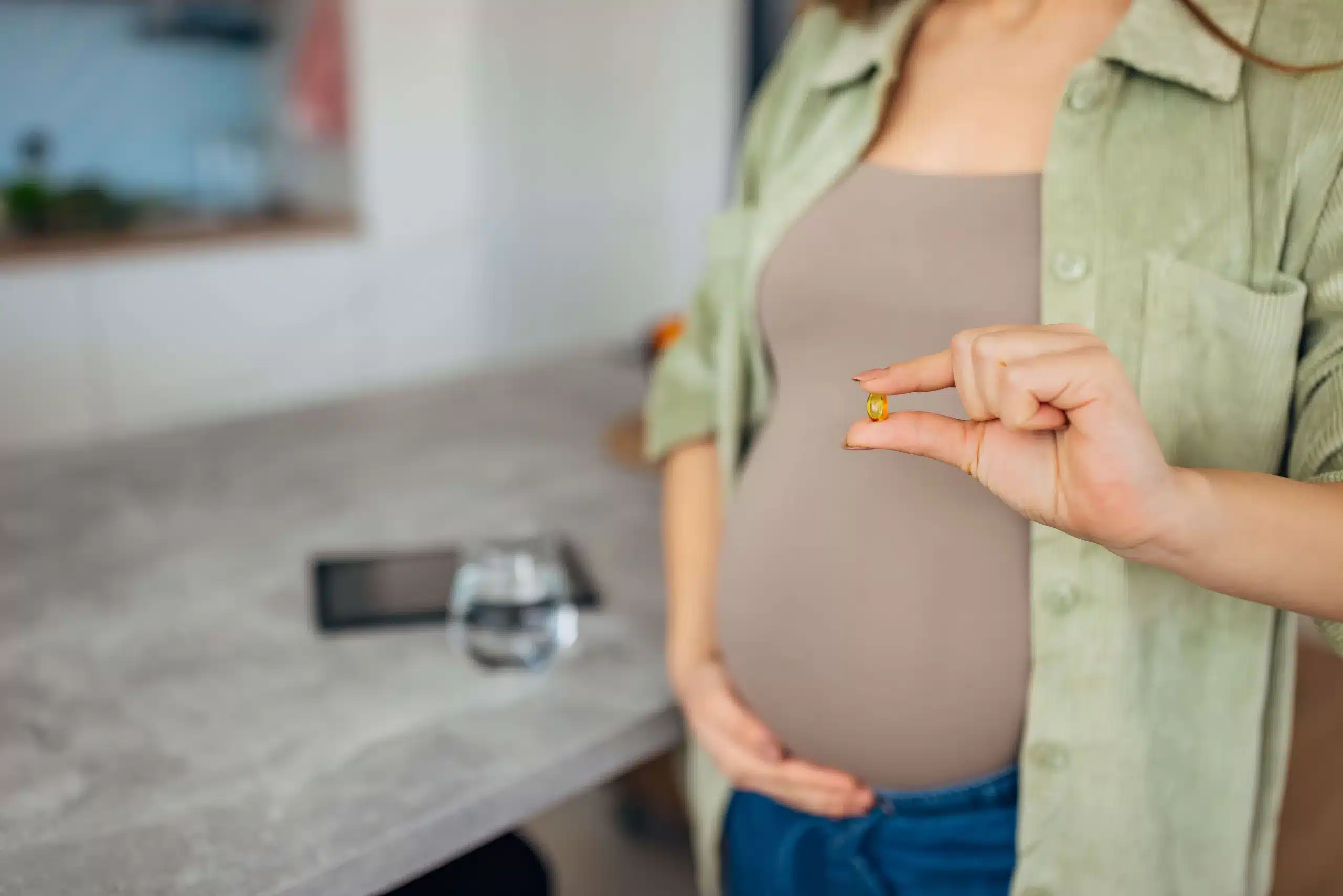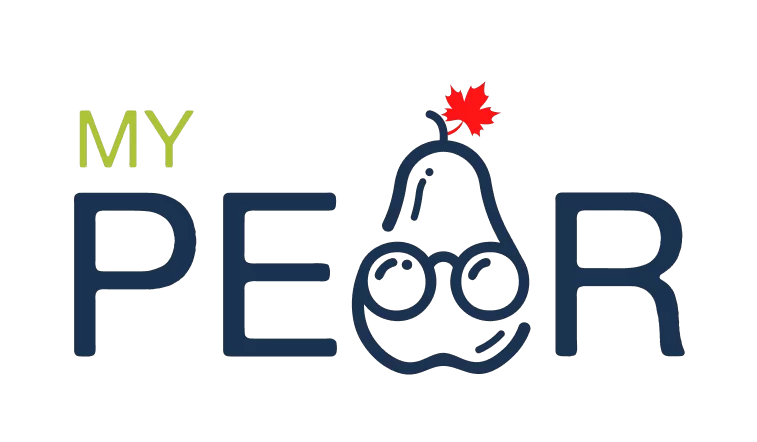Dry Eyes, Eye Care, mypear, Specialty Eye Care
Understanding and Managing Dry Eyes During Pregnancy
Pregnancy is an exciting, amazing time in your life. Many people notice clear changes in pregnancy, like a growing belly or glowing skin. However, some unexpected symptoms, such as dry eyes, can surprise a mom-to-be.
If you have noticed that you’ve been rubbing your eyes more often or feeling more discomfort than usual, you’re not alone. But feeling like you have dry eyes when you’re pregnant is much more common than you’d think, and figuring out how to treat it can make a world of difference.
In this article, you will learn why dry eyes occur during pregnancy. You will also find the most common symptoms. We will discuss safe treatments and lifestyle changes to help you feel better. And we’ll close with recommendations of what to buy to make that path to relief easier.
Causes of Dry Eyes During Pregnancy
Pregnancy is a time of major hormonal and physical change, and those changes affect all parts of your body — even your eyes. Below are the main reasons why you may experience dry eyes during pregnancy:
Hormonal Changes
Estrogen and progesterone directly affect the tear glands. Changes in these hormones can lead to fewer tears during pregnancy. These hormones affect the production and quality of tears, making them less lubricating of the eyes.
Reduced Tear Production
Pregnancy can sometimes result in decreased tear volume. This reduction can leave your eyes feeling less hydrated, which may induce a gritty or burning sensation.
Increased Tear Evaporation
Changes in tear composition and a lower blinking rate can cause tears to evaporate faster. This often happens during long screen time. This exacerbates the feeling of dryness and eye discomfort.
Understanding the root of your symptoms can help you take productive steps toward relief.
Recognizing Symptoms of Dry Eyes
If you are not sure if your eye discomfort is due to dry eye syndrome, look for these common symptoms during pregnancy:
- A gritty or sandy sensation in the eyes
- Burning or stinging
- Redness or irritation
- Episodes of blurred vision
- Sensitivity to light
- Paradoxically, excessive tearing
If you experience some or all of these symptoms, don’t worry. There are safe and effective ways to address them, even during pregnancy.

Safe Treatment Options for Pregnant Women
Treating dry eyes during pregnancy requires extra caution to ensure that both you and your baby remain safe. Fortunately, there are numerous gentle remedies available.
- Over-the-Counter Lubricating Eye Drops
Preservative-free artificial tears are a safe, go-to option for pregnancy-related dry eyes. These drops mimic your natural tears, providing immediate relief from dryness and irritation. Look for options like Thealoz Hyabak or I-Drop Pur Gel, available on mypear.ca.
- Warm Compresses
A warm compress can soothe irritated eyes and improve natural tear flow. Use a damp, warm washcloth placed gently over closed eyes for about 10–15 minutes daily.
- Eyelid Hygiene
Maintaining clean eyelids can prevent the buildup of oils and debris that may worsen dry eye symptoms. Try using gentle wipes like I-LID’ N LASH® Wipes for quick and effective cleaning.
- Omega-3 Supplements
Adding omega-3 fatty acids to your diet can improve tear quality. It can also help reduce inflammation that causes dry eyes. Consider supplements like NutraSea Dry Eye Omega-3 Mint, specifically formulated for eye health. Consult your healthcare provider before starting any new supplements during pregnancy.
- Zaspray Dry Eye Spray
Gentle and effective, Zaspray Dry Eye Spray offers targeted relief for dry, irritated eyes. It’s easy to use and safe for expecting mothers.
These treatments target dryness without compromising your health or that of your baby.
Lifestyle Adjustments for Managing Dry Eyes
In addition to treatments, certain lifestyle habits can help ease symptoms and prevent dry eyes from worsening.
Stay Hydrated
Drink water to stay healthy and keep your eyes moist. Try to drink 8-10 glasses of water each day.
Avoid Dry Environments
Dry air may worsen eye discomfort. Humidify your home, especially in winter or in air-conditioned environments, to maintain the moisture in the air.
Limit Screen Time
Spending prolonged periods looking at a computer or phone screen reduces the frequency of blinking. This lower blinking rate can cause your tears to dry up faster. Follow the “20-20-20 rule”: every 20 minutes, look 20 feet away for 20 seconds to help prevent eye strain.
Take Frequent Breaks
If you do activities that need a lot of focus on small details, like reading or knitting, take breaks. Give your body time to rest and avoid strain.
These adjustments can help alleviate dry eye symptoms and promote eye health.
When to Consult a Doctor
Pregnancy dry eyes are common and can be managed with the tips above. However, sometimes you may need to get professional help.
Seek medical advice if:
- Symptoms persist or worsen despite using treatments and making lifestyle adjustments.
- You notice severe redness, swelling, or pain in the eyes.
- Your symptoms may be linked to an underlying condition such as Sjögren’s syndrome or conjunctivitis.
An eye care professional can recommend tailored solutions to suit your needs.
Products Recommended for Dry Eyes
For expecting mothers experiencing dry eyes, these products from mypear.ca are highly recommended for achieving relief and comfort:
These safe and effective solutions have been chosen to improve tear health. They are gentle enough for use during pregnancy.
Effective Dry Eye Relief for a Comfortable Pregnancy
Dry eyes during pregnancy are common, but that doesn’t mean you have to put up with the discomfort. By understanding the causes, symptoms, and safe management strategies, you can enjoy clear, hydrated eyes throughout your pregnancy journey.
Explore the trusted dry eye solutions mentioned above at mypear.ca and take the first step toward soothing relief. Your eyes deserve the best care during this precious time!
This content has been reviewed by Optometrist Dr. Davinder Sidhu.



